-
Climate change: Our greatest national security threat?
The climate century is here: the earth is warming, humans are to blame, and we must take immediate action now to prepare for climate change’s massively disruptive consequences. Mark Nevitt writes in Just Security that No longer can climate change be categorized solely as an environmental issue—it is a grave threat to national security. Indeed, it may be the threat. While there are many national security challenges facing the nation and the world, climate change is an aptly described “super wicked” problem that exacerbates and accelerates already existing threats.
-
-
Environmental “secondary perils” an increasing threat: Swiss Re
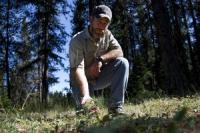
The catastrophe loss experience of the last two years is a wake-up call for the insurance industry, highlighting a trend of growing devastation wreaked by so-called ‘secondary perils’ – which are independent small to mid-sized events, or secondary effects of a primary disaster.
-
-
Defending the Earth from asteroids
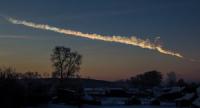
A mere 17-20 meters across, the Chelyabinsk meteor caused extensive ground damage and numerous injuries when it exploded on impact with Earth’s atmosphere in February 2013. To prevent another such impact, researchers use a simple yet ingenious way to spot these tiny near-Earth objects (NEOs) as they hurtle toward the planet.
-
-
Sensing earthquakes in a new way to help improve early warning systems
Every year earthquakes worldwide claim hundreds or even thousands of lives. Forewarning allows people to head for safety and a matter of seconds could spell the difference between life and death. Researchers demonstrate a new earthquake detection method — their technique exploits subtle telltale gravitational signals traveling ahead of the tremors. Future research could boost early warning systems.
-
-
Accurately predicting harmful space weather’s “killer” electrons

A new space weather model reliably predicts space storms of high-energy particles that are harmful to many satellites and spacecraft orbiting in the Earth’s outer radiation belt. The model can accurately give a one-day warning prior to a space storm of ultra-high-speed electrons, often referred to as “killer” electrons because of the damage they can do to spacecraft such as navigation, communications, and weather monitoring satellites.
-
-
Is Texas leading on disaster preparedness? Yes and no, experts say
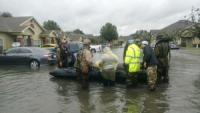
During the first legislative session since Hurricane Harvey, state lawmakers are poised to make an investment in storm recovery and flood mitigation that some have described as unprecedented. But it’s more complicated than that.
-
-
Why the Great Plains has such epic weather
From 78 degrees on Tuesday to snow on Wednesday? Swings like this aren’t unusual in the central United States, where weather can quickly shift from one extreme to another. What generates such “big weather” on the Great Plains?
-
-
Preparing San Francisco for future storms
The San Francisco Bay Area has been pummeled this winter by storms packed with moisture from atmospheric rivers. San Francisco is partnering with the Berkeley Lab to assess how climate change may influence the intensity of atmospheric rivers and associated precipitation, and how those changes may impact San Francisco and its infrastructure.
-
-
Stern warning: Climate expert emphasizes the fierce urgency of now
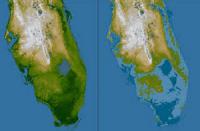
Prominent economist and policymaker Lord Nicholas Stern delivered a strong warning about the dangers of climate change in a talk at MIT on Tuesday, calling the near future “defining” and urging a rapid overhaul of the economy to reach net zero carbon emissions. “The next 20 years will be absolutely defining,” Stern told the audience, saying they “will shape what kind of future people your age will have.”
-
-
Predicting, understanding urban flooding
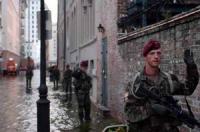
Flooding is the natural hazard with the greatest economic and social impact on the population of the United States. Urban flooding is a complex and distinct kind of flooding, compounded by land use and high population density, and it requires a different approach to assess and manage.
-
-
Owners of unprotected coastal homes don’t rush to retrofit
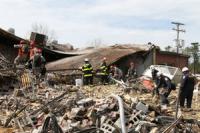
Many coastal homes have significant structural vulnerabilities that leave homeowners and their homes largely unprotected from storms. Additionally, the majority of coastal homeowners have little to no intention of reducing these structural vulnerabilities, even though they live in areas frequently affected by damaging hurricanes and flooding.
-
-
Driving force of volcanic super-hazards uncovered
Volcanologists have discovered the driving force behind superheated gas-and-ash clouds from volcanic eruptions, which may help save lives and infrastructure around the globe. Endangering 500 million people worldwide, pyroclastic density currents (or pyroclastic flows) are the most common and lethal volcanic threat, causing 50 percent of fatalities caused by volcanic activity.
-
-
A how-to guide for climate-proof cities
Traditionally, Maurepas Swamp serves as a natural barrier against flooding that threatens New Orleans each year. Native flora soaks up the rainfall, spreading it across a network of cypress roots and cattail. But centuries of logging and canal construction have drastically altered the swamp’s ecological composition. The Mississippi levee system compounded the issue, isolating the swamp from vital sources of fresh water and nutrients. Flooded with saltwater, much of the existing cypress withered and died. Young trees, now, are few and scattered.
-
-
Melting glaciers causing sea levels to rise at ever faster pace
Melting ice sheets in Greenland and the Antarctic as well as ice melt from glaciers all over the world are causing sea levels to rise. Glaciers alone lost more than 9,000 billion tons of ice since 1961, raising water levels by 27 millimeters.
-
-
Current earthquake hiatus in California is an unlikely pause
There have been no major ground rupturing earthquakes along California’s three highest slip rate faults in the past 100 years. A new study concludes that this current “hiatus” has no precedent in the past 1000 years.
-
More headlines
The long view
Trump Aims to Shut Down State Climate Policies
President Donald Trump has launched an all-out legal attack on states’ authority to set climate change policy. Climate-focused state leaders say his administration has no legal basis to unravel their efforts.
